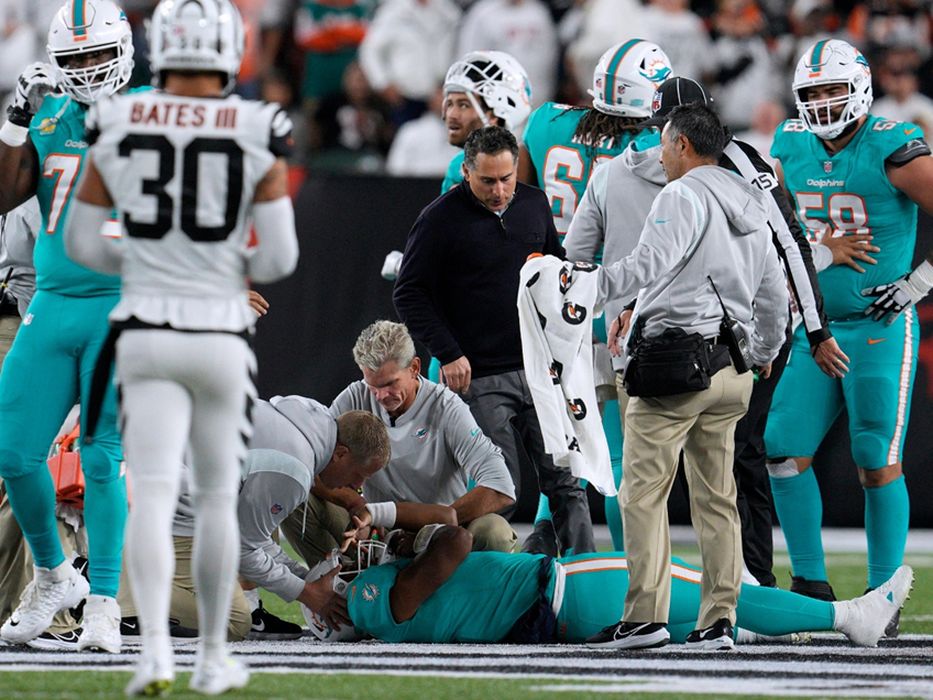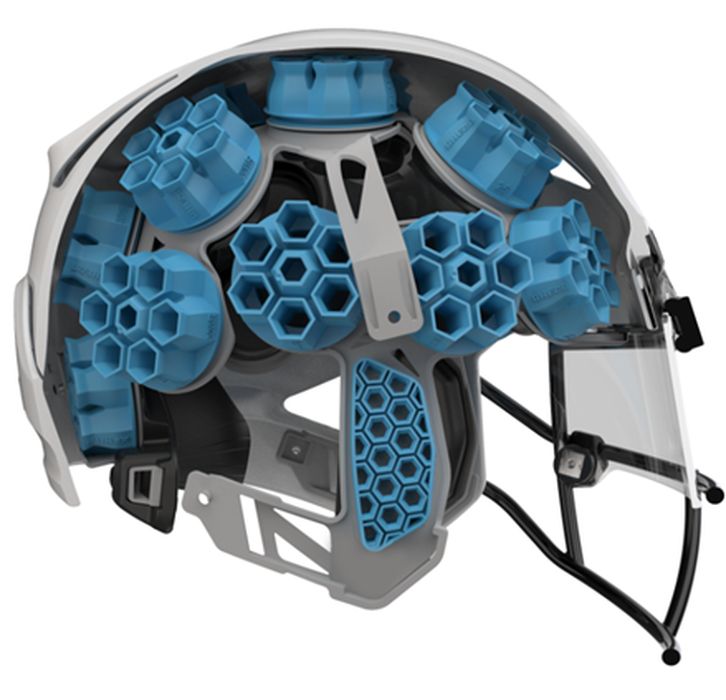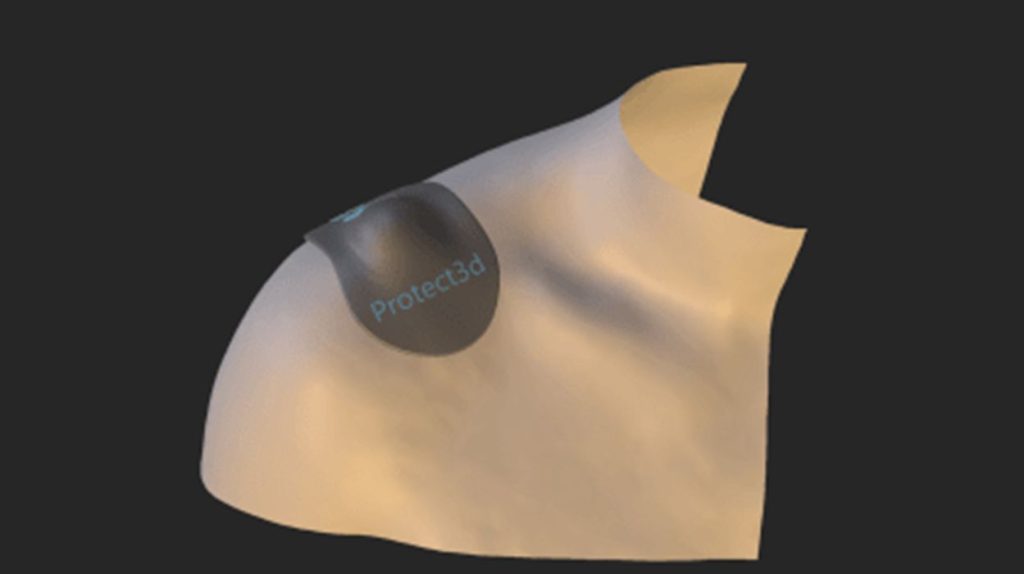
Charles R. Goulding and Warren Buzzell look at how a recent incident might have been helped with a 3D print application.
Traumatic brain injuries have had a devastating impact on professional football players throughout the history of the sport. We recently published an article, 3D Printing Technology’s Potential in Traumatic Brain Injury Research, emphasizing the potential of utilizing 3D printing technology to develop safer equipment to protect players from concussions and other forms of traumatic brain injuries (TBI).
A concussion is a form of mild traumatic brain injury (TBI) caused by a heavy blow to the head or a hit to the body that causes the head and brain to move back and forth rapidly. This forceful movement causes the brain to collide or twist within the skull, resulting in chemical changes in the brain and often damaging and stretches brain cells.
Tagovailoa’s Week 3 & 4 Injuries
The NFL has been experiencing controversy after the Miami Dolphin’s week 3 and 4 games against the Bills and the Bengals, respectively. The controversy centered around the Dolphin’s decision to clear quarterback Tua Tagovailoa for play just four days after stumbling to the ground after taking a hit to the head in the game against the Bills. According to the NFL’s concussion protocol, a player cannot return if a team doctor–in consultation with an unaffiliated neurologist–determines that a player’s gross motor instability was “neurologically caused.” However, the team doctor stated that Tagovailoa’s stumble was due to an ankle and back injury–not a concussion–so he was allowed to return to the game in the second half.
Tagovailoa suffered another hit to the head after being tackled during the next game against the Bengals just four days later. Unfortunately, after this hit, Tagovailoa did not get back up and was rushed to the hospital for further evaluation. After the fall, Tagovailoa showed signs of neurological damage, raising the question of whether he should’ve been allowed to play. This tragic event led the league to review the situation, including the team doctor allowing Tagovailoa to return to the game against the Bills and the Dolphins allowing him to play in the game against the Bengals.
A few days after the incident, the NFL Players Association (NFLPA) fired the neurologist who evaluated Tagovailoa and allowed him to return to the game.
NFL Concussion Protocol Update
After this incident, the NFL and the NFLPA agreed to update the concussion protocol to better protect players. The October 8th, 2022 improvement in the concussion protocol added ataxia to the mandatory “no-go” symptoms. It stated that players diagnosed with ataxia are prohibited from returning to the game and will receive follow-up care required by the concussion protocol.
Ataxia is an abnormality of balance/stability, motor coordination, or dysfunctional speech caused by a neurological issue.
The NFL concussion protocol was quickly updated and the new changes went into effect immediately, starting for games the next day. If diagnosed with ataxia, the players are now automatically diagnosed with a concussion and must pass the five-step process before returning to the field of play.
3D Printing Protection for Players

The NFL has been increasing its efforts to combine contemporary technology with its existing equipment to protect the players. One way was through the NFL’s Helmet Challenge, in which they pit rising innovators and some of the brightest minds in the 3D printing industry against each other to develop safer football helmets. The purpose of the challenge was to stimulate the development of a new helmet that outperforms all pre-existing helmet models. This is due to the alarming numbers of players experiencing concussions and chronic traumatic encephalopathy (CTE) because of the physical nature of the sport.
Xenith was one team among the winners of the challenge who leveraged 3D printing technology to develop a unique solution. The Xenith Shadow XR helmet utilized 3D printed molds to create a “unique energy control cell that cushions low-speed impacts, but intelligently strengthens for high-speed impacts,” where “cells compress to absorb linear impact and shear to optimally control rotational impact energy, reducing the resulting acceleration of the head.”

In addition, The 1st and Future competition is the NFL’s annual competition designed to spur innovation in player health, safety, and performance. Protect3d won the 2020 competition, winning a US$50,000 award to continue developing its innovative 3D scanning and printing technology to help improve injury recovery. Protect3d entered the competition showcasing its anatomically fitting collarbone brace technology, developed at Duke University, designed to improve recovery after a collarbone injury. Protect3d’s device utilized 3D scanning to obtain exact measurements and create unique, anatomically precise models. Then, they used 3D printers to manufacture the custom protective device.
The Research & Development Tax Credit
The now permanent Research and Development (R&D) Tax Credit is available for companies developing new or improved products, processes, and/or software.
3D printing can help boost a company’s R&D Tax Credits. Wages for technical employees creating, testing, and revising 3D printed prototypes can be included as a percentage of eligible time spent for the R&D Tax Credit. Similarly, when used as a method of improving a process, time spent integrating 3D printing hardware and software counts as an eligible activity. Lastly, when used for modeling and preproduction, the costs of filaments consumed during the development process may also be recovered.
Whether it is used for creating and testing prototypes or for final production, 3D printing is a strong indicator that R&D Credit-eligible activities are taking place. Companies implementing this technology at any point should consider taking advantage of R&D Tax Credits.
Conclusion
Traumatic brain injuries are prevalent and affect more than 200,000 people in the United States annually. On top of neurological issues, football players also have to worry about physical injuries due to the intense nature of the sport. Thankfully, we have seen increased efforts to incorporate contemporary technology to improve player safety and develop preventative hardware to reduce risks. For example, the NFL has encouraged the use of 3D printing technology in helmets and other protective equipment, as seen through the winners of their Helmet Challenge and The 1st and Future competitions. Hopefully, we will continue to see 3D printing technology used in innovative ways to improve the safety of all athletes.
